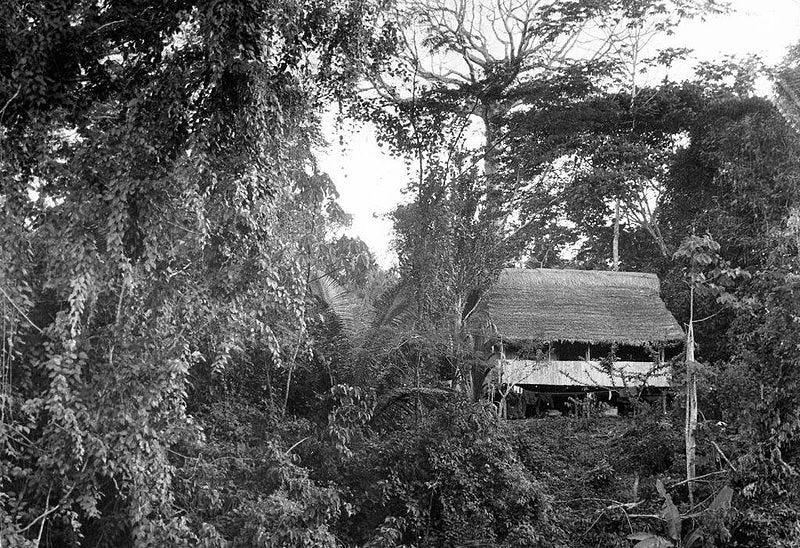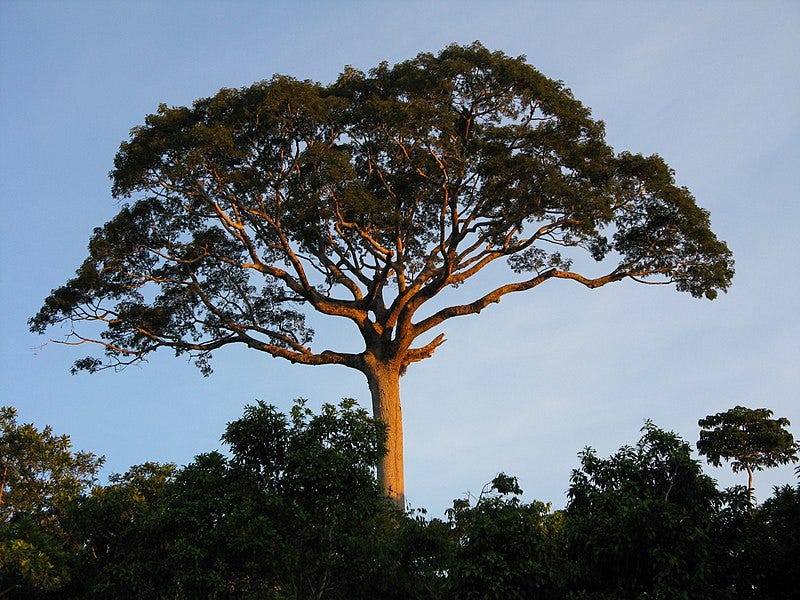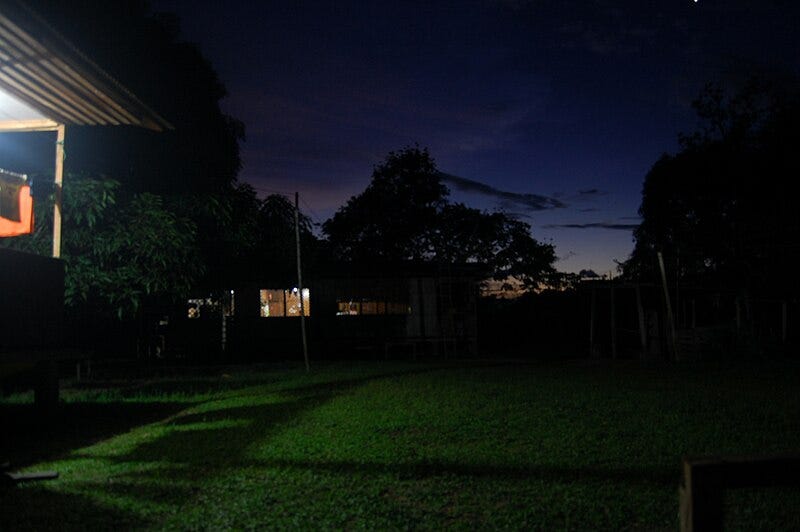Falling through the Sky and Other Pivotal Moments
Revisiting the miraculous journey of Juliane Koepcke and its aftermath.
Can you recall a turning point in your childhood, a change on which your future life hinged? The first that comes to my mind is a perfectly ordinary one: that day when the lines and squiggles in my first-grade reader resolved into recognizable words. A cognitive switch flipped, and I “got it.” I remember—at least, I think I do—fumbling in the dark and then taking those first sure-footed steps into the light. I quickly became an avid reader, complete with coke-bottle glasses for my nose-in-book nearsightedness. Trees in the distance blurred to cotton-candy fuzz, but The Phantom Tollbooth stayed sharp and clear. (I can’t see 10 feet in front of me, but I still don’t need reading glasses.)
Juliane Koepcke’s turning point, on the other hand, was the kind of story that transfixes us in books and on screens: a sudden tragedy and the swirl of choice, fate, and luck around it. When she was 17 years old, Juliane fell from a plane into the Amazon rainforest. She was the only survivor of the crash. I wrote about her three years ago, and I’m thinking of her story again.
On Christmas Eve, 1971, Juliane and her mother were flying from Lima, Peru, to Panguana, the biological research station that her parents had established to study the ecosystem of the Peruvian rainforest. For years the German couple had home-schooled Juliane, but finally German authorities insisted that the “jungle child” receive a proper education. Her parents reluctantly enrolled her in a high school in Lima. That December, Juliane had just graduated, and she and her mother were heading home to Panguana to spend Christmas with her father.

A series of decisions put them on a Lockheed L-188 Electra turboprop plane that day. Juliane’s father had urged them to find an alternate route because that particular model had an alarming track record of malfunctions and crashes. But that flight was their one chance to make it home for Christmas, so they got on board.
The plane flew into a fierce thunderstorm and shook so violently that baggage fell from the bins and sailed through the air. Then Juliane saw a flash of white light over the wing, and the plane went into a nosedive.
“Now it's all over,” her mother said with eerie calm as the other passengers screamed and cried around them.
Still belted into her seat, Juliane stayed with it when it detached from the plane in midair. Below her, she recalled later, the treetops looked like heads of broccoli.

Juliane’s miraculous survival of that fall into the rainforest was only the beginning of her ordeal. Wounded but able to walk, for 10 days she followed the river to civilization alone, without her eyeglasses, in a sleeveless summer dress and one sandal. The gifts of her Panguana education helped her stay alive.
"There was almost nothing my parents hadn't taught me about the jungle. I only had to find this knowledge in my concussion-fogged head." —Juliane Koepcke
She recognized the frog croaks and bird calls as those of home; once she had oriented herself, she knew traveling by water was safer than land as long as she avoided the piranha-infested shallows. She knew to keep that one sandal on her foot to feel for deadly snakes. Later when she stumbled across a workers’ hut, she knew to use the gasoline that she found to flush maggots from a wound.
As she limped and swam along in a nearsighted blur, Juliane vowed that if she survived, she would do something meaningful with her life.
From my previous post:
Her cause became Panguana. She went to Germany, got her doctorate in biology, and then went back to Peru to study bats. She married an entomologist who specializes in parasitic wasps. In 2000 after the death of her father, she became the director of the research station her parents had founded.
Do bats and wasps seem anticlimactic? They did to me until I remembered that entire ecosystems depend on bat colonies…. How many Panguanas are there in remote jungles where researchers do essential, little-regarded work to serve nature and humanity?
I remembered Juliane Diller née Koepcke yesterday while writing a 6th-grade reading passage about animals of the Amazon rainforest. As I researched an assortment of critters in Britannica and other sources, I noticed that every one—from capybaras to spider monkeys—was endangered by the industrial deforestation destroying its habitat. Luck and fate have nothing to do with this accelerating destruction of the planet’s respiration center, one tree and species at a time.
The turning point we’re hurtling toward is one I scarcely know how to think about. I feel deep gratitude toward people like Koepcke-Diller who spend their days studying and advocating for the rainforest on which the next generations’ lives depend. Far from charismatic crusaders on soapboxes, they are humble workers doing the often tedious and exacting work that chose them, hour by hour and day by day.

Now I get it: stories have trained us to look toward some pivotal moment as if the climax and denouement matter more than the rising action. But no one event or decision stands alone; each hinges on the ones before it. What matters most in this moment is what we are doing in this moment.
You can see photos of Juliane and Panguana on her Instagram page.


